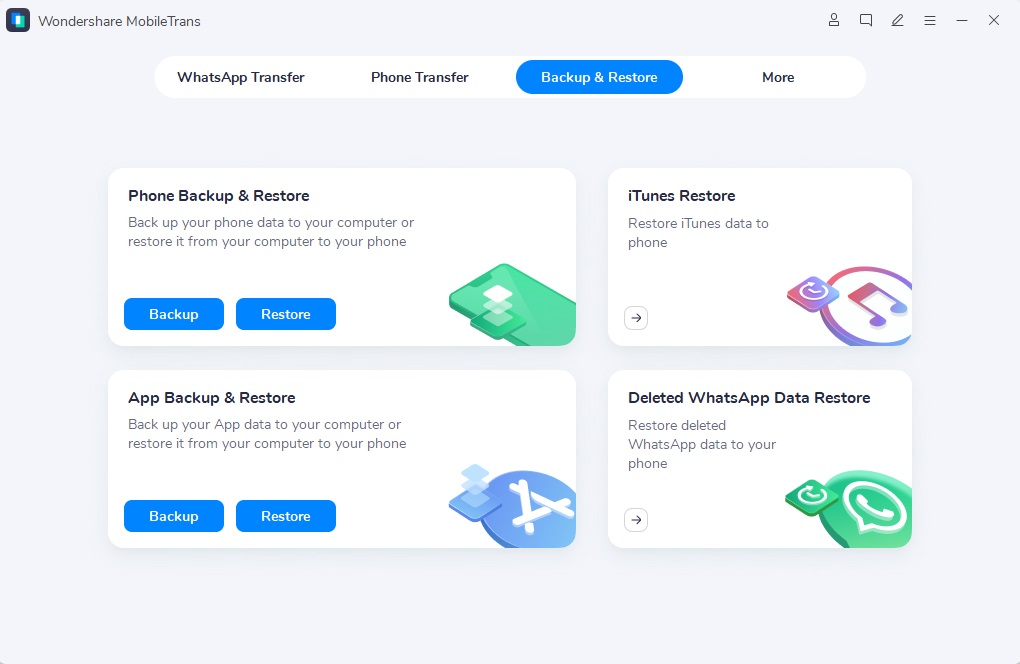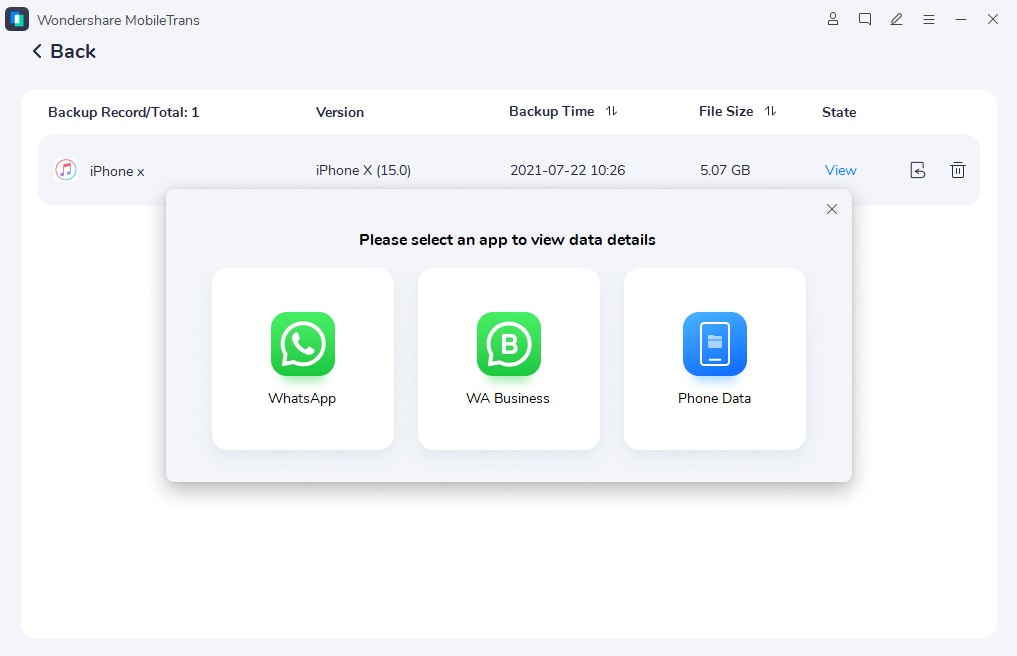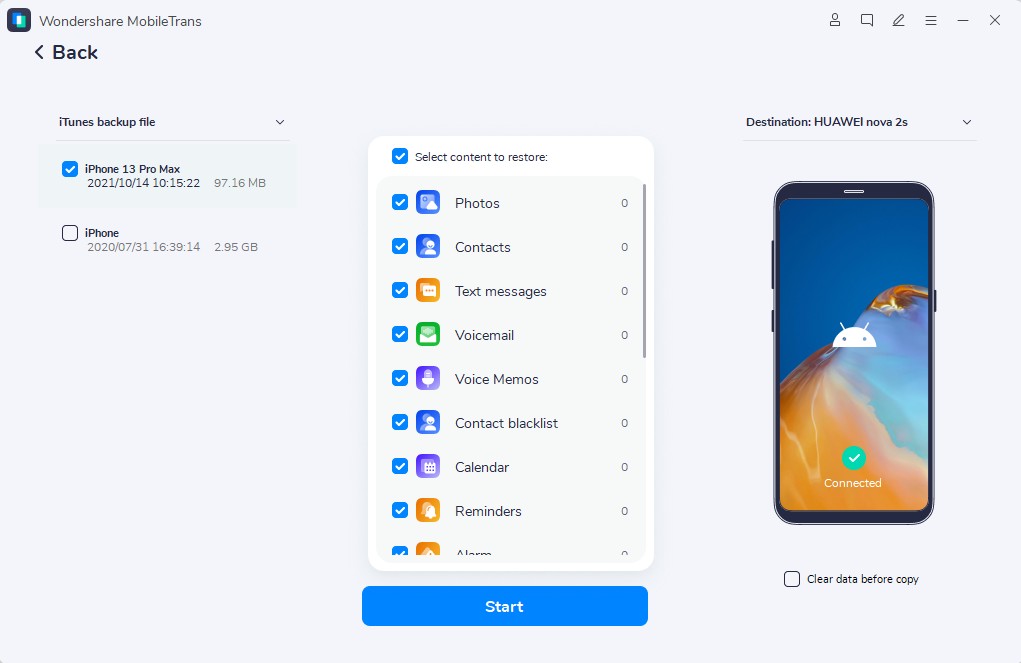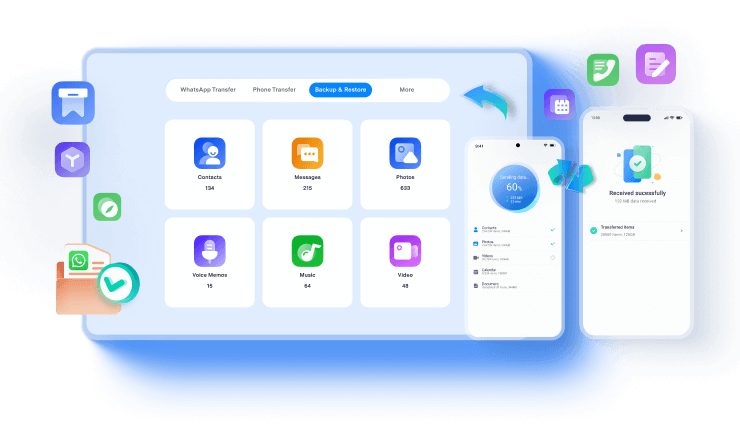Creating an iTunes backup of your Apple device is one of the best ways to avoid data loss. However, many users struggle to locate the exact iTunes backup location to restore or modify. Where are iTunes backups stored? If you are also one of the iPhone users struggling to find the answer, follow the article with detailed steps to learn the backup location for both Windows and Mac systems. Also, steps to easily change the location if you prefer otherwise.
In this article
Where is the iTunes Backup Location on Windows?
The iTunes Backup location primarily depends on the operating system you are using and the OS version you are using. If you want to find out the iPhone iTunes backup location or where is the iTunes backup stored, follow the below-given methods depending on your OS:
Where Does iTunes Store Backup on Windows 11/10
To cut it short, you can find your iTunes backup files in the MobileSync folder on the iTunes app with the paths either "C:\Users\Your username\AppData\Roaming\Apple", "Computer\MobileSync\Backup\" or "C:\Users\Your username\Apple\MobileSync\Backup\".
Here is how to find out the iTunes backup stored location on Windows 11/10:
- Go to the "Search box" on the "Start" menu or the "Taskbar" of your Windows 10/11 computer.
- If you have installed the iTunes app on your Windows PC from the Microsoft Store, enter "%appdata%" in the search box and press "Enter".

- Alternatively, enter the "%USERPROFILE%" search key and press "Enter".
- Click on the "AppData" folder from the search results and open the "Apple" folder option.
- Select "Apple Computer" from the list and open the "MobileSync" folder.
- Inside the "MobileSync" folder, open the "Backup" folder to find all your iTunes backup files.
Where Does iTunes Store Backup on Windows 7/8
Similar to the latest Windows system, you can find your iTunes backup data in the "MobileSync" folder of iTunes on Windows 7. Depending on the system settings, its path is either "C:\Users\Your username\AppData\Roaming\Apple" or "Computer\MobileSync\Backup\".
Follow the below steps to locate the iTunes backup data location on Windows 7:
- On Windows 7, go to the "Search box" by clicking on the "Start" menu.
- Enter the search key "%appdata%" in the box and press "Enter".
- Open the "Appdata" folder from the result and go to the "Apple" folder.
- Open the "Apple Computer" folder option and go to the "MobileSync" folder.
- Open the "Backup" folder inside the "MobileSync" folder to view all the backup iTunes files.

Where Are iPhone Backups Stored on a Mac?
As with Windows systems, the iTunes backup location is also in the "MobileSync" folder on the Mac. There are a couple of ways to find out where iPhone backups are stored on a Mac.
Using Finder on Mac:
- Select the "Search bar" at the top of the "Finder" menu or press the "Command + F" keys to open the search option in the Finder window.
- You can also open the search folder you want to view directly by clicking on the "Go" option at the top and selecting the "Go to Folder" option.

- Enter the folder location "~/Library/Application Support/MobileSync/Backup/" search key into the search box.
- Now, on the new window, you can view all the iTunes backup files from various Apple devices with respective backup file names.

Using iTunes on Mac:
- If your Mac is running macOS 10.15 or older, you can locate the iTunes backup store folder by opening the iTunes app and going to the "Preferences" option.
- Select the "Devices" tab at the top, right-click on the device you want to find the backup location for, and select the "Reveal in Finder" option. This will open the iTunes backup location for the selected device with all the stored data.

- If you are running the latest Catalina macOS. Go to the connected iPhone under the "Locations" section in the "Finder" window and click on the "Manage Backups" option.
- Now, on the new pop-up "Device backups" window, right-click on the backup file and select the "Show in Finder" option.

- A new window will open with iTunes backup files.
Find iTunes Backup Location Automatically
If you are unsure of the location of your iTunes backup, you can easily find and restore it using MobileTrans — iTunes Backup Restore tool. It can automatically find the iTunes backup location, browse the files, and restore many different data types from your iTunes backup to your iOS devices, including photos, videos, contacts, messages, and more.
Key features of MobileTrans - Backup & Restore program:
- You can back up all your phone data to a PC quickly and easily.
- You can restore the backup to both iOS and Android devices.
- It allows you to back up all data types, including photos, videos, contacts, messages, and more from your phone.
- Quickly restore iTunes backup from computer to phone with an easy-to-use interface.

 4.5/5 Excellent
4.5/5 ExcellentFollow the below steps to find iTunes backup location and restore backup files using MobileTrans:
- First, download and install MobileTrans- iTunes Backup Restore program on your system.
- Connect your iOS device to your system through a USB cable. Launch the app on your computer and select the "Backup & Restore" option from the main screen.
- Click the "iTunes Restore" option from the list and wait for the app to automatically detect the connected device and available iTunes backup on your system.

- Select the iPhone backup file you want to restore from the list and click the "Phone Data" option.

- Choose all the data types you want to restore from the iTunes backup and click the "Start" button to begin the restore process.

How to Change the Location of iTunes Backup
Now that we know the backup location of iTunes on Windows PC and Mac, we can change it to a new location depending on your preference; for any reason, you do not want the original location. However, the methods can vary depending on the OS and its version, including Windows and Mac.
The following methods show how to change the location of the iTunes backup depending on the OS version and type you are running:
How to Change the Location of iTunes Backup on Windows 11/10/08/07
We can use the symlink method or symbolic link to view and change the iTunes backup location on Windows running on 8, 10, or 11 versions. The symlink creates a new path for iTunes to select the backup folder. To achieve this, you need to enter a few simple commands in the command prompt to create a new symbolic link that can be used by iTunes to back up in the new location you set.
Here are the following steps to change location of iTunes Backup using Windows Command Prompt:
- First, open the original path of the iTunes backup location - "C:\Users\Your username\AppData\Roaming\Apple Computer\MobileSync\Backup\" on the "File Explorer" and create a copy of the content inside on a different location.
- Next, create a new folder where you want to save the iTunes backup. For example, we are going to choose "C:\ new folder"; you can choose your preference.

- Open the "Command Prompt" on your computer from the "Start" menu, and navigate to the new folder by using the "cd" command.
- Now, go to the original location of the iTunes backup location - "C:\Users\Your username\AppData\Roaming\Apple Computer\MobileSync\Backup\" on the "File Explorer" and delete the folder with all its content.
- Enter the following command on the "Command Prompt" now - mklink /J "%APPDATA%\Apple Computer\MobileSync\Backup" "c:\itunesbackup" to create a new backup location.

- Wait for the process to be over, which will take a couple of minutes. It will create a virtual connection between the original location and the new backup location, called a symbolic link.
- From now on, each time you create a new iTunes backup on your computer, the backup will be stored in the new location.
Conclusion
Along with the iCloud backup strategy, iTunes provides an additional local backup option for iOS devices. It is secure and safe to back up over a cable connection and provides a reliable option to access the backup anytime you want. However, many users were unable to find the iTunes backup location. But now, you can easily locate and access the folder using the solutions provided above.
Also, for any reason you want to change the location of the iTunes backup location due to a shortage of storage space in the directory, you can do it by choosing the right method for your OS and version. As an ultimate solution for your iTunes backup, you can always rely on MobileTrans for its outstanding backup & restore features if you ever get stuck.






